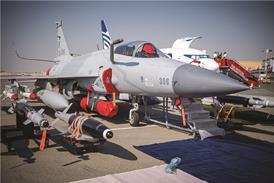Sensor-laden platforms operating in complex, dynamic environments pose a particular challenge for simulation technology - how to ensure a fair fight between simulators. The problem is particularly acute when rehearsing special-operations missions in multiple high-fidelity simulators, and the US Army is tackling the issue with an initiative to produce common databases rapidly for use across simulations.
Because of differences in databases, each simulator can see a slightly different version of the synthetic environment - a player might hide behind a feature that another cannot see, resulting in an "unfair" engagement, or a crew might be able to see a target visually but not on radar or infrared, because of limitations in the sensors.
The US Army's solution is the Common Evironment/Common Database (CE/CDB) programme, awarded to CAE three years ago, to develop an architecture and standard for the creation and correlation of visual, sensor and other databases used in training and mission rehearsal. The first device to use the architecture, a special-operations BoeingMH-47G Chinook mission simulator, has completed in-plant acceptance at CAE in Tampa, Florida, along with interim acceptance of the first, 2.1, release of the CDB standard, says Phil Perey, CAE's director of synthetic environment engineering.
The CDB specification consolidates the visual, infrared, radar and tactical environment databases that today use proprietary formats. "It's a huge task to keep them up to date and to correlate them for a 'fair fight' environment," says Perey. Instead, CAE has used open standards from the geographic information system industry as the building blocks of a common database.
|
|---|
CAE's Medallion 0 visual complies with new CE/CDB database standard |
CDB acts as an on-line common repository from which "real-time publishers" pull content for each client simulation. "They convert the common data into formats that are digestible by the radar, etc, in real time," says Perey. Each simulator might have five of six such publishers. "They act as a buffer, simplying the database for sensor simulation," he says, adding: "CDB decouples the data from the client."
CDB defines everything that is static geographically, he says. The other part of the programme, CE (common environment), handles the dynamic elements, such as weather, allowing them to be shared by clients. "The weather server can define a complex profile that is interrogated by the radar, FLIR and aircraft aerodynamic simulation," Perey says.
One goal of CE/CDB is to speed up dramatically the production and modification of databases, particularly for special-operations mission rehearsal, allowing changes to be made within minutes. Traditional database production involves collecting the "dirty" source data, cleaning it up, correlating it, and adapting it for the client. Dirty, clean and compiled versions are stored. "That's a huge infrastructure to maintain," says Perey. "With CDB the last two steps are the same database."
CDB will be a government-owned open standard, but its wider acceptance outside US Army special-operations remains uncertain. But CAE, citing the advantages for database maintenance, is already offering CDB 2.1-compliant simulators to other customers and is working of the next release, 3.0, which is to be deployed when it delivers a Sikorsky MH-60L mission simulator to US Army special operations late next year.
Flight International's unique Military simulator Census is now available online, sponsored by CAE IncSource: Flight International
























